Shortly after my 72nd birthday, I was fortunate to scratch off the number one item on my bucket list: an 11 day Beyond Band of Brothers tour of the five D-Day invasion beaches known as Operation Overload and Ardennes Offensive known to Americans as The Battle of the Bulge. My tour visited the American Sector at Utah and Omaha beaches and the British-Commonwealth Sector at Gold, Juno and Sword beaches. Particularly interesting was a stop at Pointe-du-Hoc where Rudder’s Rangers ascended the steep cliffs to take out the long-range artillery firing on the landing beaches, but ironically, the German artillery had been moved inland before the invasion.
My tour visited many sights from Point Du-Hoc and Pegasus Bridge in France to Bastogne’s “Nuts” Cave and Bois Jacques foxholes overlooking Foy in Belgium. In between, there were visits to the cities of Sainte-Mere-Eglise and Saint Lo. Brecourt Manor, Mulberry Harbor at Arromanches, Dead Man’s Corner, Malmedy Massacre site, Falaise Gap and the Siegfried Line aka Westwall for German Defense and their famous Dragon’s Teeth (Photo # ) continued to enhance the tour with a better understanding of these key battles and turning points in the Battle for Normandy. For me, particularly moving, were visits to the Luxembourg American Cemetery where General Patton is buried with his troops and the Normandy American Cemetery in Colleville-sur-Mer where 9,388 American heroes lie beneath white marble headstones amid beautiful surroundings on Omaha Beach itself 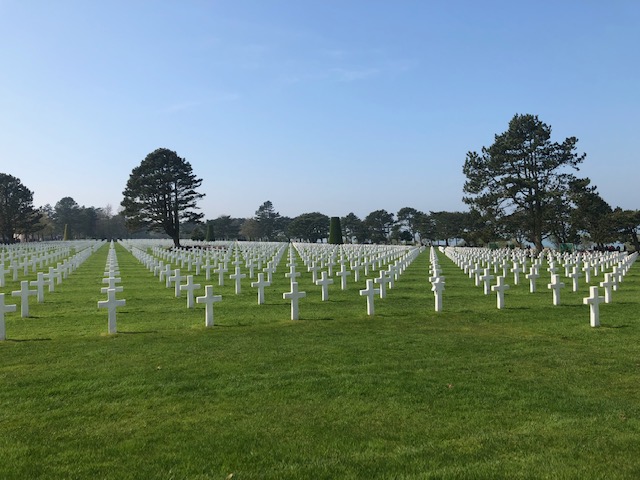
Starting early on in the tour at the restored Pegasus Bridgestop I conceived the idea to photograph and study as many fasteners and fastening applications as I could. I even got my long- time friend of 68 years Mike Janton, a true WWII history buff, to look for unique fastener applications. All these stops had a military museum and on display were a myriad of tanks, trucks, artillery pieces, jeeps, halftracks and many other military vehicles and weapon systems.
The most dominate fastener seen was the round head steel rivet; the one used on the Pegasus Bridge (3/4 x 2 3/8) and, as I discovered, on the carriages of various types of artillery pieces.
For example, the famous German 8.8 cm which was originally an anti-aircraft weapon, but used later as a highly effective multi-role weapon in several configurations was assembled with round head steel rivets. Commonly called just the “88,” many veterans and historians believe it to be the most effective artillery weapon in World War II. The Germans called it “FLugzeugAbwehrKanone.” The capitalized letters are the ones the allies used to contract the acronym “FLAK” but the Germans did not capitalize the letters, as I did here.
I saw two other solid round head steel rivet applications. One was on the American “Quad 50” gun carriage mounted on halftracks. Technically called the M16, This devastating weapon sported 4 electrically operated .50 caliber Browning machine guns. Like the German 88 it was also designed as an antiaircraft gun but as the Luftwaffe began to die, it’s use evolved into a deadly assault gun. The other rivet application I saw was on steel (some times wood and steel) “Czech Hedgehogs”  , commonly called just hedgehogs. These nasty 5’ tall X -shaped steel tank traps were effectively deployed by the Germans on Atlantic Wall landing beaches not only as tank traps at low tide but also at high tide as sharp obstacles to snare and destroy landing craft. The other popular barricade for the Germans was the Belgium Gates, which was finally a good example of the use of hex head bolts, but no markings of any kind.
, commonly called just hedgehogs. These nasty 5’ tall X -shaped steel tank traps were effectively deployed by the Germans on Atlantic Wall landing beaches not only as tank traps at low tide but also at high tide as sharp obstacles to snare and destroy landing craft. The other popular barricade for the Germans was the Belgium Gates, which was finally a good example of the use of hex head bolts, but no markings of any kind.
Not a trade fastener, but a worth noting, were “field modified” weld applications. American and British troops using ingenuity and materials at hand disassembled hedgehogs and strategically welded (and sometimes bolted) their steel I and L beams to the front of tanks, particularly the Sherman Medium Tank to act as scythes to cut through the virtually impenetrable one-thousand year old Norman hedgerows, the bocage. The hedgerows offered the German defenders excellent defensive cover and concealment and many of the graves I saw, sadly, were filled with men ambushed in the bocage of Normandy.
Also observed in my WWII fastener search, were locking features. I often saw hex slotted nuts with a cotter pin.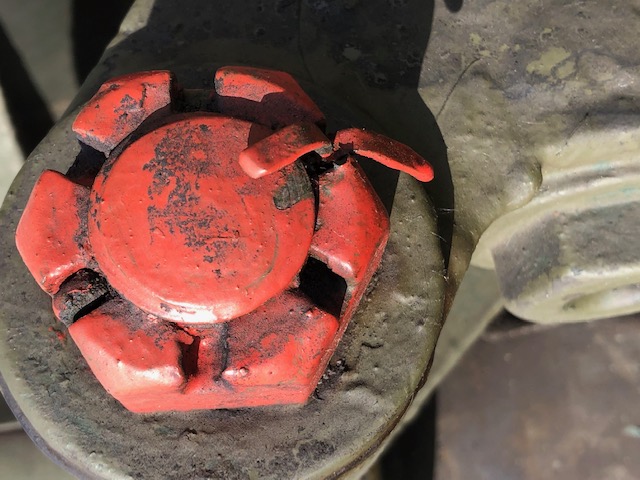 . Additionally, a strange looking hex indented screw with attached(?) tooth lock washer was seen on several German weapons systems. In the trade today, we might call it a “SEMS” screw, but it was of a totally different configuration.
. Additionally, a strange looking hex indented screw with attached(?) tooth lock washer was seen on several German weapons systems. In the trade today, we might call it a “SEMS” screw, but it was of a totally different configuration. 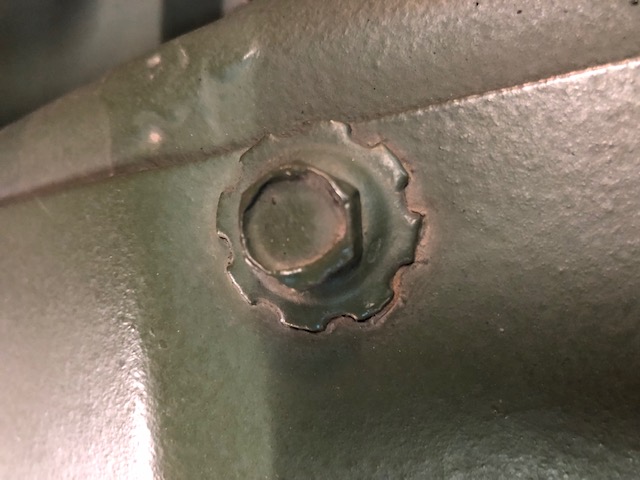 Actually, it could not have been a SEMS screw as the Germans had no way to attach the washer to the screw with cut threads; it needed to be rolled threads The SEMS screw was invented in the late 1960s by ITW Shakeproof® in particular for applications demanded by the automotive industry.
Actually, it could not have been a SEMS screw as the Germans had no way to attach the washer to the screw with cut threads; it needed to be rolled threads The SEMS screw was invented in the late 1960s by ITW Shakeproof® in particular for applications demanded by the automotive industry.
Amphibious assault craft were in short supply for D-Day, in fact their paucity delayed the invasion at one point. One answer to this shortage was the famous “Higgins Boat.” To be sure, the wooden Higgins Boat with its steel front drop door, technically called landing craft vehicle, personnel (LCVP) had been in use since earlier in the war. They could be manufactured quickly and inexpensively. One of the major fasteners used were hex indented head, Phillips drive wood screws.
The Phillips Drive was patented in 1936 and was of great advantage to the Americans and in particular for airplane production. Of course, the Axis Powers did NOT have this Phillips Drive recess available to them. This is where I saw countersunk screws, flat head slotted machine screws and then later in the war they used oval slotted machine screws I believe for better engagement of the slotted screw drivers. The only three drive recesses I noticed were Slotted, Phillips and Hex. I saw no socket screws at all and I never saw what I would call a Heavy Hex head bolt. I was only able to see the exterior of various war machines, but nothing “under the hood” or inside.
One head style I found interesting was “what I call”, a Hex-Pyramid type on one version of the German Tiger I tanks (Panzerkampfwagen VI Ausf. E), where the barrel was attached to the turret, elevation mechanism and on wheels aligning and powering the treads 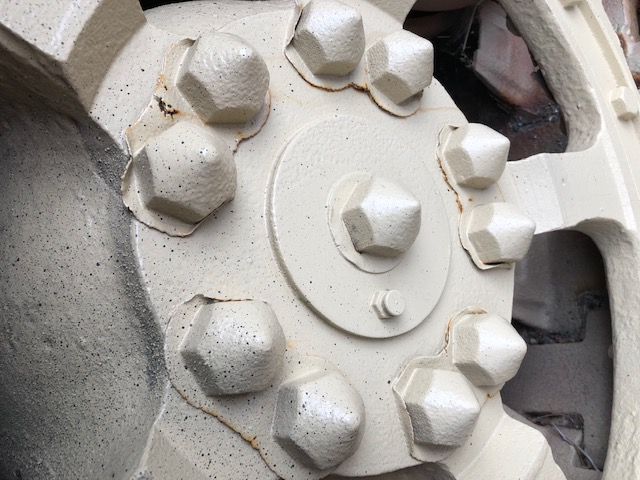 . Malleable iron wing nuts were common on German tanks and armored vehicles, particularly on hinges and clasps. Generally, there were no head markings on German hex head bolts with the one exception “Verbus 8 G” on a Tiger I
. Malleable iron wing nuts were common on German tanks and armored vehicles, particularly on hinges and clasps. Generally, there were no head markings on German hex head bolts with the one exception “Verbus 8 G” on a Tiger I 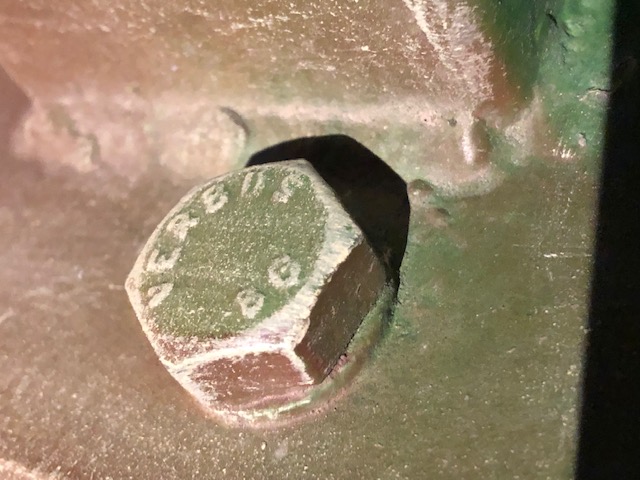 . Research revealed these hex heads were manufactured by Bauer & Schuarte in Germany. One problem, I have encountered is determining whether the fasteners I saw were in fact original or added as part of a post-war restoration. For example, I noticed elastic stop nuts on just one tank tread wheel and what looked like a Marsden locknut on another. I know the Elastic Stop Nut was used on US plane engines and fuselages’ starting in 1943, and I am sure NOT on German tanks. I never noticed any Flex-Loc® and/or Stover® type and/or “top-lock” crown lock nuts. Represented in very limited use were split lock washers and flat washers, which were very rare. I tried to get more information from companies that restore military vehicles, tanks, cannons and the like, but was not satisfied with their varied answers.
. Research revealed these hex heads were manufactured by Bauer & Schuarte in Germany. One problem, I have encountered is determining whether the fasteners I saw were in fact original or added as part of a post-war restoration. For example, I noticed elastic stop nuts on just one tank tread wheel and what looked like a Marsden locknut on another. I know the Elastic Stop Nut was used on US plane engines and fuselages’ starting in 1943, and I am sure NOT on German tanks. I never noticed any Flex-Loc® and/or Stover® type and/or “top-lock” crown lock nuts. Represented in very limited use were split lock washers and flat washers, which were very rare. I tried to get more information from companies that restore military vehicles, tanks, cannons and the like, but was not satisfied with their varied answers.
At this point, I was frustrated. There had to be more information about fasteners used in World War II. I googled World War II fasteners with no real luck. Then, I went to my personal collection of fastener material and uncovered Volume One, Number One of FASTENERS Vital in Every Industry published by the American Institute of Bolt, Nut and Rivet Manufacturers, copyright 1944!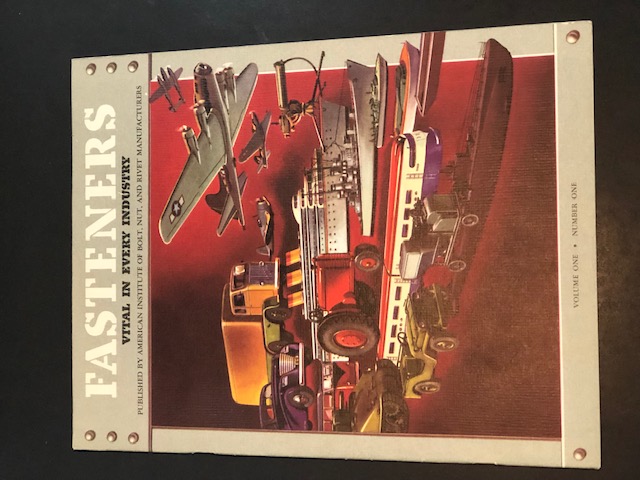 I followed that up with a reread of my copy of The Heritage of Mechanical Fasteners, Copyright 1991 by the Industrial Fastener Institute (IFI). Now, I was off and running.
I followed that up with a reread of my copy of The Heritage of Mechanical Fasteners, Copyright 1991 by the Industrial Fastener Institute (IFI). Now, I was off and running.
During World War I, the lack of consistency with screw threads between the Allied countries of United States and Britain, was a huge problem. Field repairs became a nightmare because there was no interchangeability between most fasteners. The IFI publication revealed that In July 1918, a National Screw Thread Commission was formed under the Bureau of Standards. This commission prepared a monumental work that left the U.S. exceptionally well equipped with thread standards for every use both civilian and military. With an end of the War to End All Wars in 1918, interest to reach an international agreement faded and the Commission was disbanded.
In 1933, the U.S. War and Commerce Departments formed the Interdepartmental Screw Thread Committee. The committee’s work with four members of the American Standards Association (now ANSI) culminated in the definitive National Bureau of Standards Handbook H28; however this book was not published until 1944.
Before and during World War II, lack of standardization, became an even a bigger problem. Orders for war equipment manufactured for the British Military by American companies called for Whitworth threads and the tooling required, was very difficult to obtain. When the United States entered the war in 1941, the two countries encountered continuing problems because British supply depots often had identical parts for both armies except for fasteners.
As an aid, the United States made an emergency internal compromise for British orders: The American War Standard for Screw Threads of Truncated Whitworth Form. It helped American manufacturers and British military consumers during the war, but still left both countries with screw thread standards misaligned as the United States entered the war.
The first step toward a unified thread form was taken when the U.S.-Britain Combined Production and Resources Board invited British, Canadian and American delegations to meet in New York in 1943, in London in 1944 and at Ottawa in 1945. A basic agreement was reached at the third conference which was to use the 60-degree thread angle as the basis for a new thread system that would include most of the sizes and pitches of the Sellers Coarse and Fine series. But, by 1945, the war was virtually over and apparently the issue was left fallow. One advantage the Americans had over the British was that their thread form had flat roots and crests.
In 1948, however, a formal “Declaration of Accord with Respect to the Unification of Screw Threads: was agreed upon by the American-British-Canadian (ABC) conference in Washington, DC. The Unified Thread System combined the best features of both Whitworth and Sellers, and added necessary fillet in the roots of screws for high stress applications. It also allowed for manufacturing methods then in use in each country.
The United Thread is based on the traditional Anglo-American “inch” measurement system. At the same time this was adopted, the International Organization of Standardization (ISO) began work on a worldwide standard screw thread system. Final agreement was reached at New Delhi in 1964, but it was divided into two parts: ISO Inch and ISO Metric.
The ISO Inch Screw Thread System is the same as the Unified, but the ISO Metric Screw Thread System was all new, designed to replace numerous national metric systems. There were several more changes during the late 1960s and early 1970s to reach the Optimum Metric Fastener System (OMFS) in 1971 as recommended by the IFI. The ANSI reviewed and endorsed the OMFS standard in 1974. The history of the Standardization of Screw Threads is an article for another time as fastener standardization is a never-ending activity.
The IFI publication (which I highly recommend buying a copy) revealed some interesting historical notes about WWII fasteners. Highlights include; blind riveting in aircraft production, rolled thread process improvement, internal wrenching of high strength fasteners in aircraft production and interchangeability of parts for maintenance applications, which became an increasing success for allied forces. Pre-fabricated sections of riveted pontoon bridges, landing ramps, floating docks and pier heads saved valuable time during assembly in the field for combat engineers under enemy fire.
Throughout WWII, the lives of American troops as always “hung by a thread” but fasteners of consistently high-quality workmanship and interchangeability by many manufacturers increased equipment reliability, which saved lives. The Axis powers of Japan and Germany had a different story. Japanese standards were very crude and German fastener standards were even worse. Moreover, design specifications were poor, and most production machinery and methods were antiquated verses that of the United States. Most threads were cut, rather than rolled and starving slave labor and sabotage by them kept fastener production levels low. By 1944, when Nazi production officials recognized the importance of fasteners it was too late. The magnitude in the United States for the production of bolts, nuts, screws and rivets reached 170,000,000 daily consuming about 2 percent of all the steel produced. The standardization was so effective that the products of over 100 plants were interchangeable and there were about 450,000 different sizes of bolts, nuts, screws and rivets in use for the war effort
Another “Fun area” I discovered while researching this article, were period fastener advertisements. Appearing in Colliers, Life and Look magazines among others, manufacturers lent their weight to the war effort on the Home Front. Often colorful and reminding citizens to buy war bonds these ads informed the public to the wide range of items civilian market manufacturers altered to produce for the military. “Zip-Klip” Flag Fasteners, “Lift-the-Dot” apparel fasteners and Crown Zippers – “Two-Way track makes Crown the world’s safest most dependable zipper”, mentioned by a grinning machine gunner in one ad. Heli-Coil® Inserts, BOOTS, self-locking anchor nuts, “60% lighter and although lighter, these all-metal nuts are tougher and safer than other nuts,” Tinnerman Speed Nuts- “Fastest Thing in Fastenings”, Marman’s Quick-coupler Hose Clips, ESNA for fuselages and engines and 3M’s “Scotch” Acetate Fibre Riveters’ tape are some wonderful examples.
World War II was seminal in improving the American fastener industry, in fact, it put the industry into the modern age. Many new fasteners, fastening methods, locking features and “safety nuts” were perfected with much attention paid to fastener technology and fastening application engineering which continually improves today.
It was fun researching this article but what I saw were only land vehicles and weapon systems, a study should be done about World War II aircraft and naval vessel fasteners as well. Any FEEDBACK would be greatly appreciated!
Written: June 6th 2019, the 75th Anniversary of D-Day

